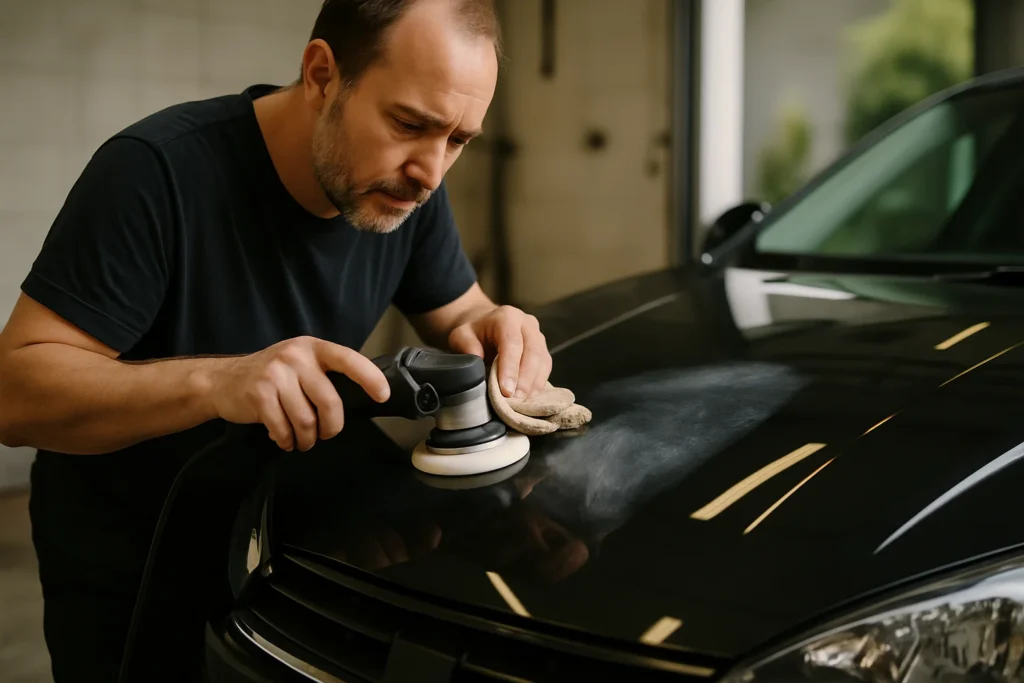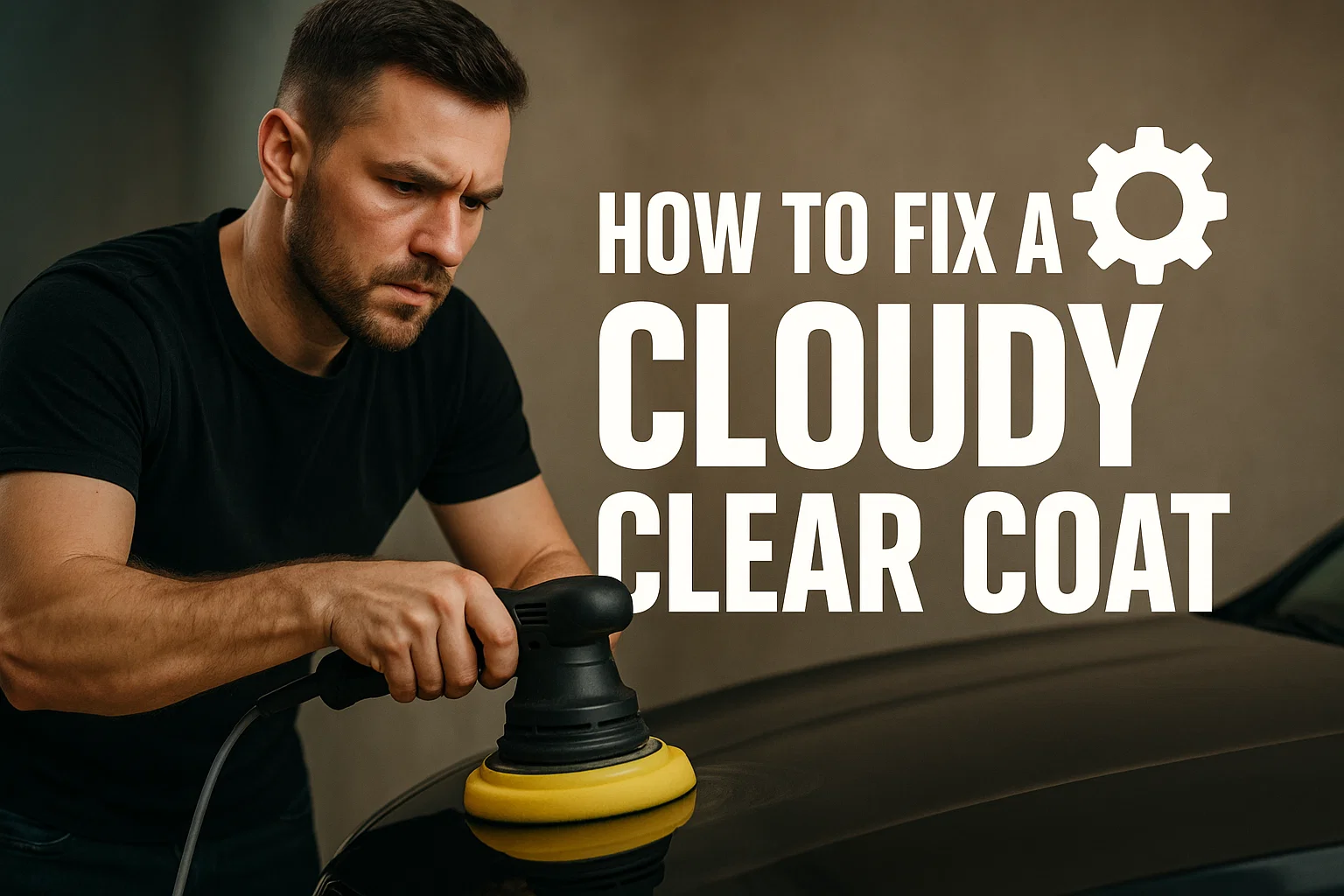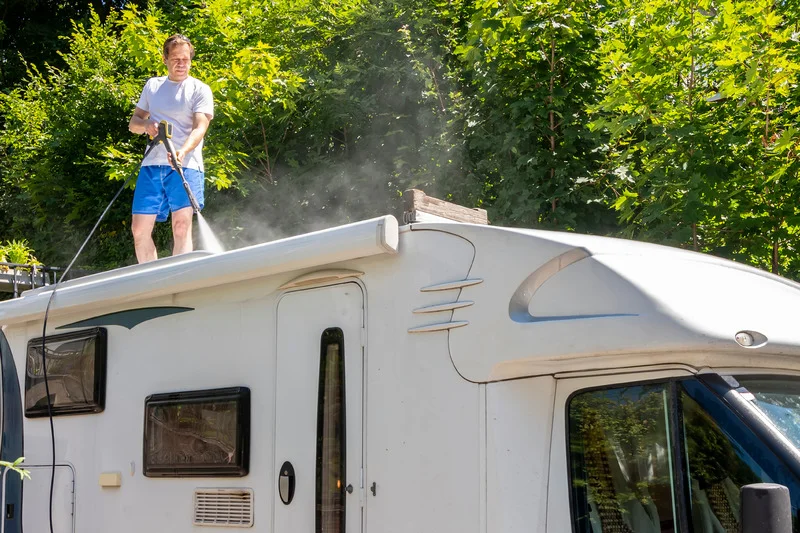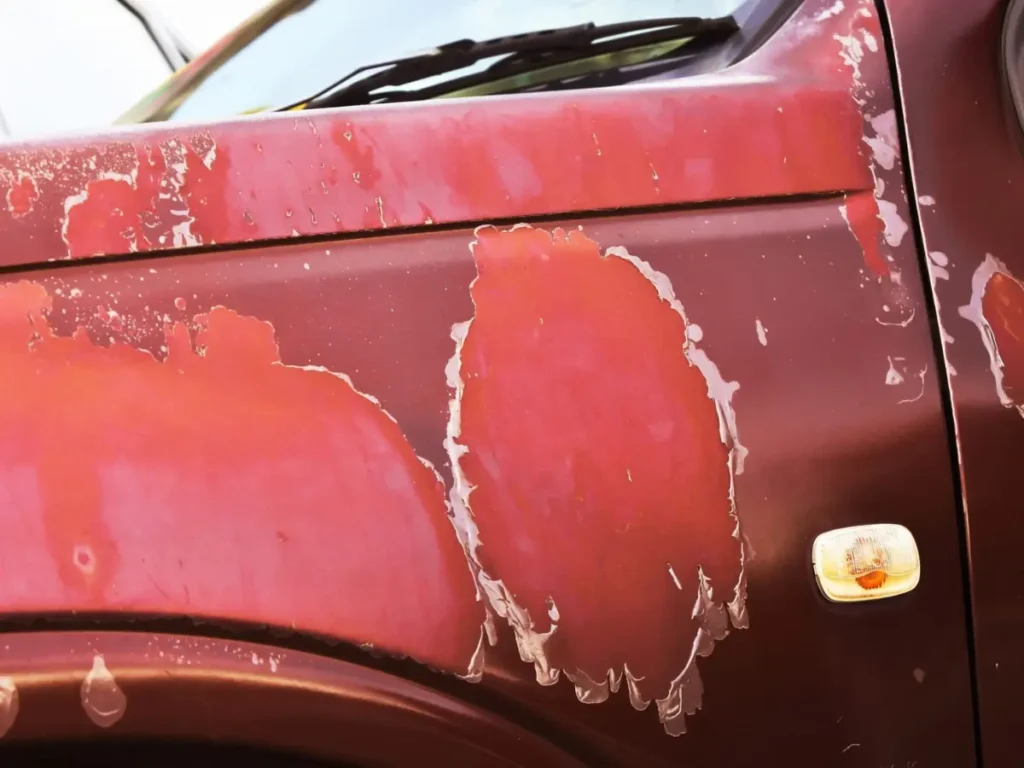It is possible that you are having a cloudy or clear coat on your car. You have noticed that your car does not have a shiny and smooth paint but a foggy, dull, or hazy one. But you don’t know the meaning of these signs. It is a fact that many vehicles experience this problem after some time and most often because of the adverse weather conditions, exposure to the sun, negligence and inadequate paint job. One needs to know how to repair a cloudy, clear coat and make it shine again. This article will describe how to fix and repair a cloudy or foggy clear coat and what it should look like.
What Is a Cloudy Clear Coat and Why Does It Happen?
A clear coat is the transparent layer of protection that is put over the painted base of your car. It is used to give gloss, UV protection, and scratch, chemical and environmental protection to the underlying paint.
Over time, the clear coat may be cloudy, foggy, or dull, which makes the car lose its shine and the paint acquire a lifeless appearance. This is because of the microscopic damage to the surface, contamination, or chemical alteration of the clear coat.
Common Causes of Cloudy or Foggy Clear Coat
- Oxidation: Oxidation will occur due to long exposure to the sun
- Water Spots and Mineral Deposits: This will leave hard water deposits on the paint that can etch the clear coat, making it look hazy.
- Environmental Contaminants: Acid rain, bird droppings, tree sap, and road salts are some of the items that can damage or stain the clear coat.
- Bad Paint Work: The absence of a good, clear coat during manufacturing or even during repaint work may cause peeling or clouding.
- Moisture and Humidity: Excessive moisture during application or poor drying conditions cause “blushing,” a cloudy appearance.
- Age and Wear: Natural aging and mechanical wear from washing, polishing, or rubbing can thin or mar the clear coat.

Can a Cloudy Clear Coat Be Fixed?
In a number of situations, the cloudiness may be enhanced or corrected completely using restoration methods that eliminate the ruined outer layer or refill the surface. However, in case of severe oxidation, cracking, peeling, or thinning of the clear coat, there is a possibility that the car will require professional repainting.
- The oxidation or contamination, or minor chemical damage of the surface that has caused small to moderate amounts of cloudiness can be restored.
- Any serious damage, like flaking or blistering, must be sanded and repainted to ensure that the damage has been corrected permanently.
How to Restore and Fix a Cloudy Clear Coat
Corrections and restoration of clear coats are cleaning, defect removal, polishing and protection of the surface to restore clarity and gloss.
1. Surface Paint Decontamination & Cleaning
Wash the car with quality auto shampoo that will get rid of the dust, dirt and surface oils. Take off any bonded contamination such as tree sap, tar or industrial fallout with water and a clay bar or paint cleaner that holds water and will give paint a cloudy appearance.
- Do not wash in the sun but wash as much water as you can.
- A microfiber towel should be used to dry the car.
2. Clear Coat Inspection
After cleaning, examine the paint in the bright light to identify the extent of cloudiness and any other faults such as swirl marks, scratches or peeling. This will assist you in determining the level of aggressiveness that the correction should be.
3. Use a Clear Coat Cleaner or Pre-Polish
Depending on the case, clear coat cleaners or pre-polish compounds can be used to remove superficial oxidation in order to prepare the surface to be polished. The mild abrasives contained in these products open up the clear coat to a sufficient extent that the clarity is restored without rough scratching.
- Use a foam or microfiber applicator.
- Make it a little bit at a time.
4. Clear Coat Polish
Polishing is the most significant step in the process of fixing a cloudy clear coat. In the process of polishing, a very light coating of the oxidized or damaged clear coat is removed and a smooth, clear finish remains. This returns gloss and transparency.
- A dual-action polisher will yield the most desirable results; hand polishing is also possible, but will take a longer time to finish.
- The haze can be removed by the use of a medium cut polishing compound and pad.
- Fine polish to give it a glossy and smooth finish.
- Use little amounts at once and apply medium pressure in circular motion.
5. Treat Extreme Haze (In case of emergency)
In case the polishing does not eliminate the haze, or the clear coat is blushing (white, milky haze that is usually caused by trapped moisture during the application), wet sanding may be necessary.
- Lightly sand the surface by hand using ultra-fine sandpaper (2000-3000 grit).
- Ensure that you take a lot of care not to sand away the base coat but only the clear coat.
- Follow sanding with thorough polishing and refinishing.
Due to the fact that sanding significantly decreases the thickness of clear coats, it is only supposed to be performed by skilled hands or professionals.
6. Use Clear Coat Restorer or Sealant
After the polishing has been done, the newly restored surface should be covered with a clear coat restorer, sealant, or wax. These products cover the small pores and leave a barrier on them that gives more gloss and protection against contaminants.
- Apply a quality carnauba wax, synthetic paint sealant or ceramic coating that fits your requirements.
- Apply very thinly and burnish to a good polish.
7. Care of the Restored Finish
It is essential to maintain the clear coat regularly to prevent it from going cloudy once again. Clean your car well, do not use very strong chemicals and wax your car or seal it once every few months. Direct sunlight is not advisable.
Common Causes and Fixes Related to Specific Terms
| Problem/Term | Cause/Description | How to Fix It |
| Clear Coat Foggy | Surface oxidation, water spots, contamination | Polishing and clear coat cleaners |
| Clear Coat Blushing | Milky haze due to moisture trapped during paint drying | Wet sanding and polishing |
| Clear Coat Flat | Loss of gloss from heavy wear or abrasion | Polishing and applying quality wax or sealant |
| Clear Coat Correction | Refining and restoring the clear coat surface | Multi-stage polishing and paint restoration |
| Clear Coat Restorer | Product designed to restore shine on aged clear coats | Use after polishing to seal and improve gloss |
How Much Does It Cost to Fix or Restore Clear Coat on a Car?

The cost of fixing a cloudy clear coat may be as large as it is small, based on the degree of cloudiness and the procedure of repairing it:
- DIY Restoration Kits: This is a combination of cleaners, polishers, and waxes that are usually sold between $20-50.
- Professional Detailing Polish and Sealant- its average price varies between 150 to 400 dollars depending on the size, and the level of damage.
- Full Paint Correction and Wet Sanding – It can be 300 to 1000$ or more.
- Full Clear Coat Re-application/Respray- This is going to cost between 1000 and 3000$, depending on the size of the car and the level of quality required in a professional paint shop.
It is possible to repair slightly cloudy clear coats using DIY techniques without spending a lot of money, but seek professional opinion in case the damage seems serious.
When to Seek Professional Help
Most cases of cloudy or foggy clear coat can be resolved using DIY solutions, but in some cases, you may need professional service to eliminate complicated issues and guarantee long-term success. It is always good to know when to look for the services of an expert to save you time, money, and frustration.
Severe Oxidation or Clear Coat Thinning
When the clear coat has begun to noticeably go thin, or when the paint is coarse and dull even after polishing, it is a possible sign that oxidation has greatly infiltrated the paint. Some special tools and products can be used to resolve such problems safely by professionals.
Peeling, Flaking, or Blistering Clear Coat
When the clearcoat starts to peel or blister, that is a definite indication of major degradation that can not be polished out. Such damage may require sanding, repainting or total replacement of the clear coat that would require professional technicians.
White Milky Haze (Blushing) That Does Not Improve
Moisture trapped in the paint as it is being applied, a condition called blushing, often needs professional wet sanding and refinishing to remove the haze without damaging lower layers.
Deep Scratches or Other Paint Defects
When you have deep scratches, gouges or other defects in your clear coat that expose the base coat or even the metal, you will need professional repair to avoid rust and the possible additional damage.
Lack of Confidence or the Suitable Equipment
There are situations when you have no idea whether you can safely reapply the clear coat or you lack proper tools, i.e., dual-action polishers and professional-grade compounds, then it is more appropriate to leave the task to the professionals who can produce the best possible results.
Maintaining Vehicle Value
When it comes to a high-quality or classic car, professional restoration means the clear coat is brought back to industry standards, thus protecting the appearance and resale value.
Conclusion:
Cloudy clear coat is a frustrating yet, in most cases, fixable issue that affects car owners worldwide. Proper cleaning, polishing, and protection will enable you to restore the shiny appearance of your automobile’s paint. Light cloudiness is easily fixed by using DIY cleaners and polishes and clear coat cleaners, but the worst haze needs professional, detailed or paint correction. The best way to ensure that the clear coat is in a perfect state even after restoration is prevention and maintenance.
In case your clear coat is severely damaged or peeling, you may consider repainting your car by an expert as a long-term solution.
FAQs
No, a cloudy coat does not get better by itself. It needs to be cleaned, polished, or restored to regain its clarity.
Paint can be harmed by household cleaners or abrasives. Use the products that are specifically manufactured to repair clear coats on cars.
The majority of cars just require polishing once or twice a year and waxing every two to three months.
Wet sanding may be hazardous and should be performed by skilled users or professionals since one may ruin the layers of paint.
The extreme wear out can be seen by peeling, flaking and deep scratches showing the metal, which can’t be fixed by polishing.




